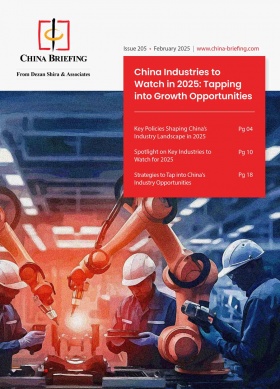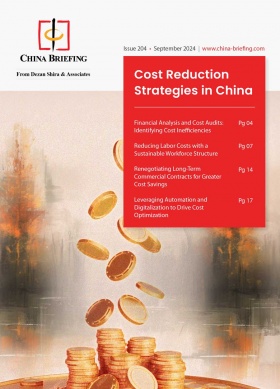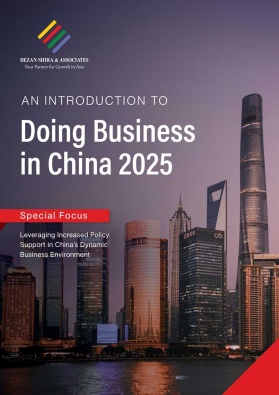China-Cambodia Ties: Boosting Trade, Investment, and Opportunities
The China-Cambodia economic partnership is experiencing significant growth, driven by robust trade, strategic investments, and emerging opportunities. This collaboration is not only enhancing bilateral economic ties but also paving the way for sustainable development and mutual prosperity. Explore how these two nations are leveraging their strengths to create a dynamic and thriving economic landscape.
Diplomatic relations and strategic partnerships
China and Cambodia officially established diplomatic relations on July 19, 1958, and have since maintained a strong cooperation. Their ties were elevated to a comprehensive partnership of cooperation in 2006 and further upgraded to a comprehensive strategic partnership in 2010. In April 2019, the two countries signed the Action Plan 2019-2023 on Building a China-Cambodia Community of Shared Future, committing to 31 measures across five key domains: politics, security, economics, people-to-people relations, and multilateral cooperation.
However, their relationship has been increasingly shaped by China’s development agenda, particularly under the Belt and Road Initiative (BRI) introduced in late 2013. China has played an influential role in Cambodia’s economic growth, positioning itself as Cambodia’s most trusted partner by providing unwavering support across various sectors.
In 2024, this strong partnership yielded tangible results, expanding cooperation in investment, trade, tourism, and culture. 2025 has been designated as the “China-Cambodia Year of Tourism”, further solidifying their deepening cultural and economic ties.
China’s ongoing support remains vital to Cambodia’s socio-economic development and poverty reduction. As these ties deepen, Cambodia and China are on track to build a high-quality, high-level, and high-standard China-Cambodia community with a shared future.
China-Cambodia expanding trade relations
China-Cambodia trade has continued to expand significantly, driven by regional and bilateral free trade agreements. According to Cambodia’s General Department of Customs and Excise (GDCE), bilateral trade volume reached US$4.48 billion in the first four months of 2024, marking a 15.1 percent increase from US$3.89 billion in the same period last year. China remains Cambodia’s top trading partner, ahead of Vietnam, the United States (the US), Thailand, and Japan.
Penn Sovicheat, Secretary of State and Spokesperson for the Ministry of Commerce of Cambodia, credited the growth to the Regional Comprehensive Economic Partnership (RCEP) and the China-Cambodia Free Trade Agreement (CCFTA), both of which took effect in 2022. These agreements have facilitated the export of high-quality Cambodian agricultural products—such as milled rice, yellow bananas, mangoes, longans, cassava, and pepper—to China under preferential tariffs. Additionally, trade promotion events, including expos and business forums, have further strengthened bilateral economic ties.
Between January and November 2024, China-Cambodia trade soared by 24 percent compared to the same period in 2023, reaching nearly US$14 billion. GDCE data indicates that Cambodian exports to China totaled US$1.6 billion (+22.3 percent), while Cambodian imports from China amounted to US$12.15 billion (+24.5 percent).
At the same time, Cambodia’s Royal Government has outlined an ambitious economic development strategy, aiming to transition from a least developed country (LDC) to a middle-income country by 2030 and achieve high-income status by 2050. In this context, China’s vast market and strong purchasing power play a crucial role in Cambodia’s growth.
Cambodia’s trade position has also benefited from shifting global trade dynamics, particularly US-China trade tensions. These tensions have encouraged Chinese companies to relocate their investments from China to nearby countries including Cambodia, leveraging Cambodia’s preferential tariffs for US exports, while reinforcing Cambodia’s position as a key beneficiary of China’s economic policies.
China-Cambodia bilateral investments
China’s outward investment in Cambodia has seen a significant increase in recent years. As of 2023, the total investment recorded stood at US$1.378 billion, a notable rise from US$632.18 million in 2022. This data, which is updated annually, highlights the growing importance of Cambodia as a key destination for Chinese investments. On average, China’s outward investment in Cambodia has totaled approximately US$466.75 million per year from 2003 to 2023.
According to a press release from the Council for the Development of Cambodia (CDC) on January 13, 414 investment projects, amounting to approximately US$6.9 billion, were approved in 2024. Chinese investments continue to dominate the landscape, making up about 49.82 percent of the total foreign investment in Cambodia for the year, cementing China’s position as the largest source of foreign capital for the country.
Additionally, the number of Chinese companies operating in Cambodia has risen sharply. By 2024, nearly 3,000 Chinese companies were registered with the Ministry of Commerce, marking a 20.65 percent increase compared to 2023. Moreover, the total number of Chinese companies registered in 2024 reached 2,921, reflecting the effectiveness of efforts by Cambodia’s commerce ministry and provincial administrative bodies to attract Chinese investors.
Notably, Chinese investment is transforming Cambodia’s industrial landscape. According to the Cambodian government, more than half of the factories in Cambodia are now Chinese-owned, amounting to an estimated total investment of around US$9 billion. This highlights the pivotal role of Chinese capital in shaping Cambodia’s manufacturing sector and broader economic growth.
China-Cambodia treaties and agreements
RCEP
The RCEP Support Unit (RSU) was officially launched in December 2024, further strengthening economic cooperation among its member states. RCEP is the world’s largest trade bloc, encompassing approximately 30 percent of global GDP (US$26.2 trillion) and 30 percent of the world’s population. The agreement covers various sectors, including trade in goods and services, investment, intellectual property, e-commerce, and small and medium-size enterprises (SMEs).
The RCEP framework has provided Cambodia with stronger trade ties, particularly with China, its largest trading partner. In the first four months of 2024, Cambodia’s exports to RCEP countries reached US$3.36 billion, marking a 16.2 percent increase compared to the same period in 2023. Key Cambodian exports benefiting from RCEP include garments, footwear, vehicle spare parts, bicycles, and agricultural products like rice, bananas, and cassava.
At the same time, imports from China have increased, particularly for motorcycles, buses, and electronic equipment. The CCFTA has further supported this growth, diversifying Cambodia’s manufacturing base and attracting Chinese foreign direct investment (FDI).
Trade in goods – tariff reductions & simplified procedures
Under RCEP, 92 percent of tariffs will be progressively eliminated over the next 20 years, improving market access for participating countries. While some agricultural and sensitive products are excluded, most goods will benefit from lower costs. Additionally, simplified customs procedures will expedite clearance, particularly for perishable goods and express consignments, which will be released within six hours of arrival.
Trade in services – market access & investment
RCEP commits to opening at least 65 percent of service sectors to foreign investors, particularly in telecommunications, financial services, logistics, and professional services. The agreement follows a ‘negative list’ approach, meaning sectors not explicitly restricted will remain open to foreign participation. Furthermore, investment facilitation provisions ensure greater transparency and legal protections, reducing barriers for Chinese businesses expanding across Cambodia.
China-Cambodia Free Trade Agreement (CCFTA)
The CCFTA came into effect on January 1, 2022, bringing significant tariff reductions and strengthening economic cooperation between the two countries. Under the agreement, China has eliminated tariffs on 97.53 percent of Cambodian exports, while Cambodia has removed tariffs on 90 percent of Chinese imports.
For Chinese imports from Cambodia, tariffs on motor vehicles, previously set at 25 percent, will be gradually eliminated over 20 years. Similarly, tariffs on compression-type heat pumps, which were previously 10 percent, will also be phased out over the same period. Meanwhile, nickel oxides, hydroxides, and lithium carbonate will continue to be exempt from tariffs. On the Cambodian side, electric and lithium-ion accumulators, which previously faced a 15 percent tariff, will see their tariffs eliminated over 20 years, while nickel oxides, hydroxides, and lithium carbonate will also remain tariff-exempt.
To qualify for preferential tariff treatment, the agreement establishes rules of origin, requiring a 40 percent minimum regional value content for specific products. This applies to certain vehicles, as well as semiconductors, photovoltaic cells, LED components, and piezo-electric crystals.
Beyond tariff reductions, the agreement fosters deeper cooperation in services, investment, the Belt and Road Initiative (BRI), e-commerce, and economic technology. By enhancing trade relations, China and Cambodia aim to maximize the benefits of the agreement for businesses and consumers in both countries.
China-Cambodia Double Taxation Agreement (DTA)
The China-Cambodia Double Taxation Agreement (DTA) was signed on October 13, 2016, and came into force on January 26, 2018. This agreement aims to eliminate the double taxation of income earned in one country by residents of the other, thereby fostering cross-border trade and investment between China and Cambodia.
Key features of the DTA include:
- Permanent Establishment: The DTA defines the conditions under which a Chinese company is considered to have a permanent establishment (PE) in Cambodia, such as having a place of management, office, or construction project lasting more than nine months.
- Reduced Withholding Tax Rates: The agreement reduces withholding tax rates on dividends, interest, and royalties from 14 percent to 10 percent. Interest payments to Chinese financial institutions with majority government ownership are fully exempt from withholding tax.
- Technical Services: Fees for technical services are subject to reduced withholding tax rates unless the services are provided through a PE in Cambodia.
The DTA enhances fiscal transparency and improves the tax collection mechanism between the two countries, making it easier for businesses to operate across borders and benefit from preferential tax treatments. This agreement is a significant step towards strengthening economic ties and promoting mutual growth and development between China and Cambodia.
Further agreements
The China-Cambodia “Diamond Hexagon” cooperation framework serves as a comprehensive platform for engagement across six key areas: politics, manufacturing, agriculture, energy, security, and cultural exchanges. Both countries have emphasized the need to deepen collaboration in emerging sectors such as artificial intelligence (AI), science and technology, digital trade, and green innovation. Strengthening cooperation in these fields is seen as a way to reinforce the “Ironclad friendship” while addressing the challenges of an evolving global landscape.
A major step in this direction is the planned establishment of the China-Cambodia Joint Committee on Science, Technology, and Innovation, which will facilitate technology transfer and promote people-to-people exchanges. China also supports Cambodia’s digital transformation by investing in education and vocational training. The involvement of BYD, a leading Chinese electric vehicle (EV) manufacturer, in setting up an EV assembly plant in Cambodia is another key initiative. While this investment is expected to generate jobs and boost local industries, its broader impact on Cambodia’s long-term industrial capacity remains a topic of discussion.
Additionally, agricultural collaboration plays a central role in bilateral ties. The “Fish and Rice Corridor” initiative is a flagship project aimed at enhancing Cambodia’s agricultural productivity, ensuring food security, and improving rural livelihoods. The initiative aligns with Cambodia’s broader goal of modernizing its agricultural sector through Chinese expertise, investment, and technological support.
Cultural and people-to-people exchanges have also taken center stage in China-Cambodia relations. The designation of 2024 as the China-Cambodia People-to-People Exchange Year highlights the commitment of both nations to fostering deeper cultural understanding and educational cooperation. It further strengthened ties, with Cambodia receiving 848,952 Chinese visitors, a 55 percent increase from the previous year. This surge in tourism has contributed to economic growth, particularly in the hospitality and service sectors
This initiative complements broader economic projects, including the Industrial Development Corridor, which focuses on strengthening Cambodia’s manufacturing sector and integrating it into global supply chains.
Moreover, major BRI projects such as the Sihanoukville Special Economic Zone, the Phnom Penh-Sihanoukville Expressway, and the Siem Reap Angkor International Airport have significantly boosted Cambodia’s connectivity and economic potential. The Siem Reap Angkor International Airport, in particular, has enhanced Cambodia’s position in the global tourism market by improving access to the UNESCO-listed Angkor Archaeological Park, attracting a growing number of international visitors.
Prospects and opportunities
Looking towards the future, Cambodia is strategically focusing on its agricultural sector to reduce its trade deficit. The country’s abundant agricultural resources, favorable climate, and strategic location for export destinations present significant opportunities to boost agricultural exports. Strengthening this sector is critical for Cambodia’s economic growth, and increasing its productivity will be key to improving the trade balance. With bilateral trade between Cambodia and China projected to reach US$15 billion by 2025, the growing importance of this partnership underscores its vital role in Cambodia’s economy.
In addition to bolstering agriculture, developing a skilled workforce is essential for attracting more investment. As Cambodia continues to modernize its industries and infrastructure, building a workforce capable of meeting the demands of emerging sectors such as digital trade and green technologies will be crucial in driving future growth.
China’s initiatives to improve connectivity in Cambodia and Southeast Asia further support this trajectory. These efforts are part of the BRI and align with the ASEAN Master Plan on Connectivity (MPAC) 2025. The BRI has been instrumental in financing key infrastructure projects in Cambodia, including expressways and rail networks, with the China Road and Bridge Corporation (CRBC) taking the lead in construction. Planned projects include the enhancement of railways, ports, airports, and the development of digital and energy infrastructure—all of which are expected to accelerate Cambodia’s economic growth.
A notable example is the proposed high-speed railway from Phnom Penh to Poi Pet, a critical trade link between Cambodia and Thailand. The CRBC, China Communications Construction Company, and China Metro Group are committed to investing in Cambodia’s infrastructure, including the Phnom Penh-Poi Pet railway, and expressed interest in conducting a feasibility study for a metro in Phnom Penh. China has pledged RMB 300 million (approximately US$44 million) to support the upgrade of the Phnom Penh-Poi Pet railway to a 160km/h standard-gauge electrified line.
China will also offer a comprehensive upgrade of the 382km meter-gauge railway. CRBC presented preliminary findings from a feasibility study for the upgrade, estimating the cost at US$4 billion. The Cambodian government is seeking a build-operate-transfer agreement with China, where the debt incurred will be repaid through revenue generated by the railway.
Overall, Cambodia’s relationship with China remains strong, characterized by deepening economic ties and strategic cooperation. As the two countries continue to work together on key infrastructure and trade projects, their partnership is set to play a central role in Cambodia’s continued development.
About Us
China Briefing is one of five regional Asia Briefing publications, supported by Dezan Shira & Associates. For a complimentary subscription to China Briefing’s content products, please click here.
Dezan Shira & Associates assists foreign investors into China and has done so since 1992 through offices in Beijing, Tianjin, Dalian, Qingdao, Shanghai, Hangzhou, Ningbo, Suzhou, Guangzhou, Haikou, Zhongshan, Shenzhen, and Hong Kong. We also have offices in Vietnam, Indonesia, Singapore, United States, Germany, Italy, India, and Dubai (UAE) and partner firms assisting foreign investors in The Philippines, Malaysia, Thailand, Bangladesh, and Australia. For assistance in China, please contact the firm at china@dezshira.com or visit our website at www.dezshira.com.
- Previous Article China-Ireland Relations: Opportunities in Trade and Investment
- Next Article China Industries to Watch in 2025: Tapping into Growth Opportunities









